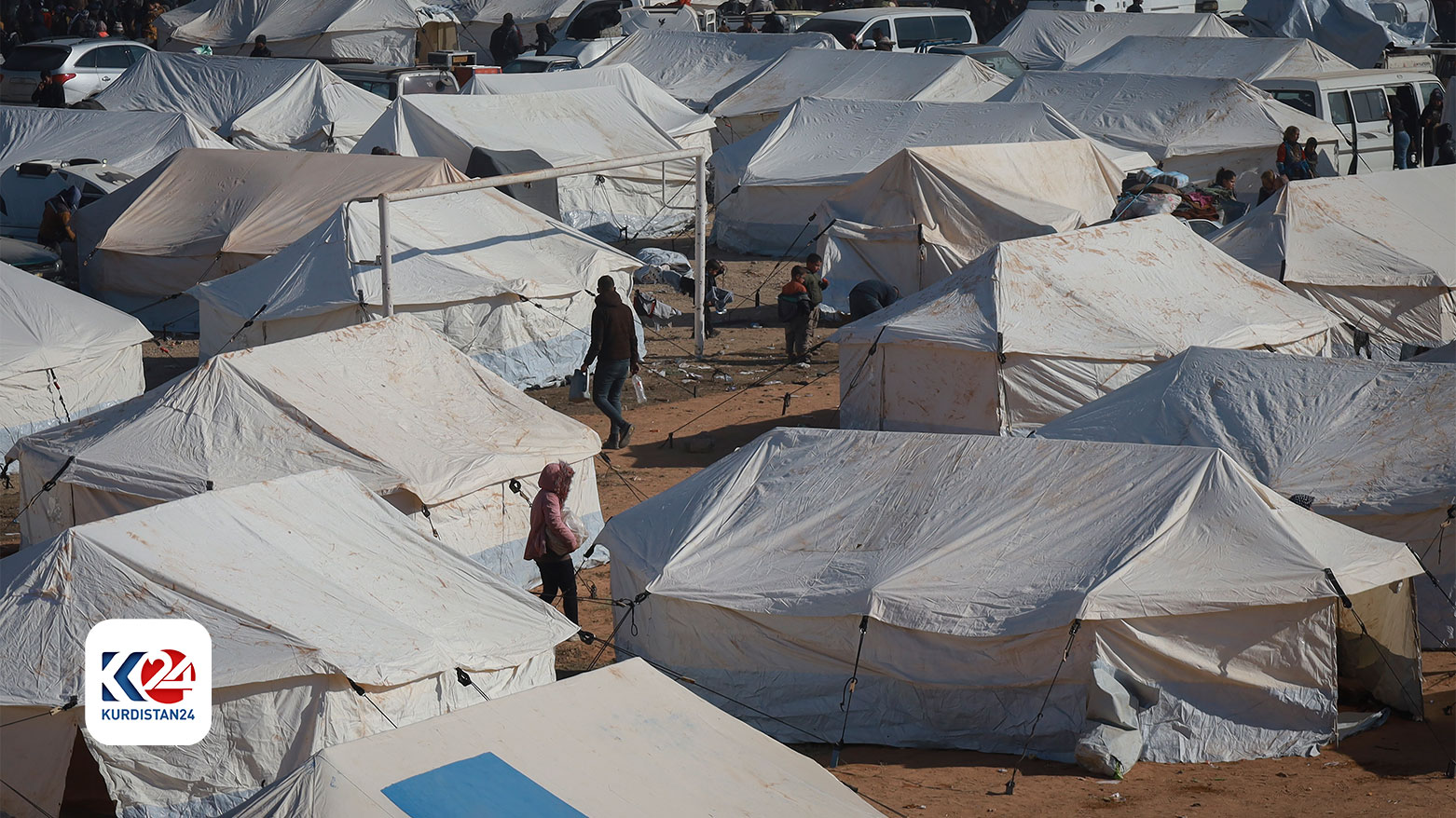730,000 Syrian refugees face flooding in Northern camps: UN
According to the UN Office for the Coordination of Humanitarian Affairs (OCHA), heavy rains and strong winds since the beginning of 2024 have caused damage to 8,800 tents, with about 1,000 tents totally wrecked out of the existing 260,000 shelters.

Dec. 27, 2024
ERBIL (Kurdistan24) – The United Nations reports that nearly 730,000 Syrian civilians living in refugee camps in northwestern Idlib and around Aleppo have been impacted by heavy rainfall and flooding.
According to the UN Office for the Coordination of Humanitarian Affairs (OCHA), heavy rains and strong winds since the beginning of 2024 have caused damage to 8,800 tents, with about 1,000 tents totally wrecked out of the existing 260,000 shelters.
The UN has detailed that 13 million Syrians have fled their homes since the conflict began.
174,000 people were internally displaced in 2023 alone, bringing the total number of internally displaced persons to approximately 7.2 million.
An additional 6.5 million Syrians have sought asylum in Western countries.
The Syrian crisis began in 2011 with protests against the regime of Bashar al-Assad.
The government's reaction to the protests included mass arrests and extensive bombardment of cities and provinces, leading to one of the largest refugee crises in recent history.
The UN considered this situation a "humanitarian catastrophe" and "a story of massive failure."
Over the following decade, the conflict changed into a complicated civil war including several international actors, causing extensive destruction to the infrastructure and displacement of civilians.
The Assad regime's use of chemical weapons and barrel bombs against civilian populations also led to international condemnation and sanctions.
The deteriorating humanitarian situation was particularly dire in northern and northeastern parts, where millions of internally displaced persons sought refuge in makeshift camps near the Turkish border.
Originally intended as temporary solutions, these camps became semi-permanent settlements lacking basic infrastructure and vulnerable to extreme weather conditions.
As Syria is adjusting to the post-Assad reality, it remains to be seen how the transitional government will deal with the urgent issue of IDPs.
